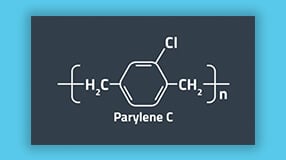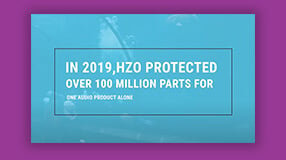Hydrophilic vs Hydrophobic: What's The Difference?

Hydrophilic vs. Hydrophobic
Today’s technical terminology can be dizzying. On an average day here at HZO you hear people throw around words like nanotechnology and vapor deposition as casually as if they were talking about their neighbor’s cat.
Today, we will decipher a few of these words and talk more about what two of these terms, in particular, “hydrophilic” and “hydrophobic,” actually mean. Along the way, we will clarify how the two are similar and different and show which one applies to our HZO technology.
Curious? Keep on reading.
What Does Hydrophilic Mean?
Hydrophilic, defined by the Merriam-Webster Dictionary, is “of, relating to, or having a strong affinity for water.” This essentially means the ability to mix well, dissolve, or be attracted to water.
What does Hydrophobic Mean?
Hydrophobic, defined by the same dictionary, is defined as “resistant to or avoiding wetting.” Practically the opposite of hydrophilic!
What’s the difference between the two?
According to these straight definitions, we can see that these two terms are opposites. Something defined as hydrophilic is attracted to water, while something hydrophobic resists water. This means when hydrophobic items come in contact with liquids, water is encouraged to bead up and roll off the surface- almost pushing it away as a magnet pushes away metal objects.
A great example of something that is hydrophilic is self-cleaning glass. This special glass has been engineered and coated with a nano-sized, thin film. Instead of allowing water to form into droplets that bead up and roll off the glass, this cool nanotechnology helps tiny water molecules glide over the surface in a sheet, washing dirt or other debris away.
For an example of a hydrophobic substance, look no further than HZO technology. Our thin-film nano-coating encourages water and other liquids to bead up and roll off whatever it is applied to, be it a cell phone, tablet, or tiny circuit board. Although this isn’t the main property of our different coatings (we would rather brag about the actual physical barrier it creates between liquids and the important electronic components being coated), the hydrophobic properties are an added bonus.
Which coating is better? Well, within the electronics industry, we want to keep water away from the important electrical components inside of devices. A coating that causes water to bead up and roll away will keep electronics alive and well long after contact with water – so the hydrophobic coating wins this time.
These days there are a lot of other nano-coating products out there that claim hydrophobicity yet don’t measure up. Not HZO.
Record-Breaking Sea Kayak Journey Around Ireland - HZO
HZO Success Story: NavELite - HZO
Difference Between Water Resistant, Repellent, & Proof | HZO
Multi-skilled marketing director with more than 18 years’ experience in growing the customers and brands of diverse companies. Ability to meet diverse marketing challenges by utilizing experience, skills, and creativity. Expertise in demand generation, content, branding, design, and communications.
Additional Resources

Learn About HZO's Partnership With a Fortune 100 Consumer Electronics Company















